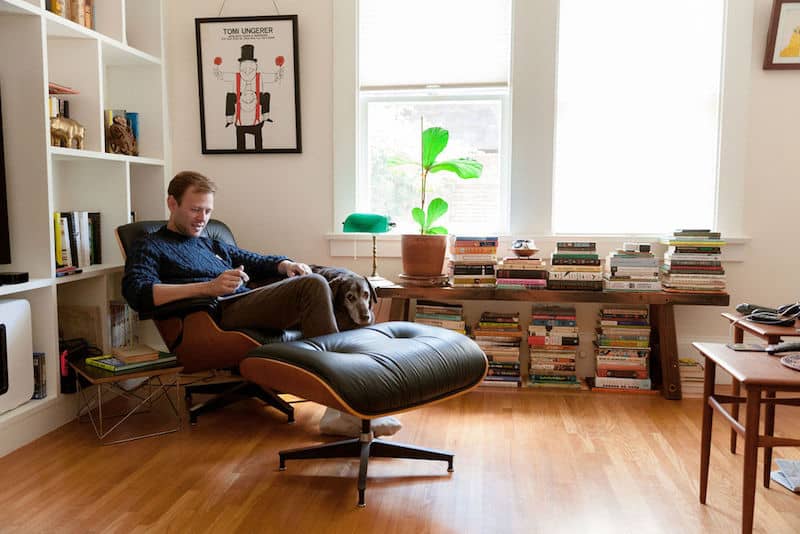
The Bookshelf: Inside the Oakland Studio of Author Mac Barnett
Written by Erin Feher
Photography by Emily Scott
Mac Barnett is a little sad that he doesn’t have paint on his pants. The prolific kids’ book author thinks the studios of the illustrators he collaborates with (such as Christian Robinson and Jon Klassen) have a little more to look at. Their desks are covered with markers, scissors, and paintbrushes, while, as a writer, Mac just gets to use a fancy pencil sometimes. But the countless fans—us very much included—of his nearly 40 books would surely disagree that this makes him any less of a fascinating subject. After all, Mac is the storyteller, the one who dreamt up the whimsical friendship (and rivalry) between three shapes, the one who wrote a bunch of screwy love poems about a pig, and the one who created a cacophonous apartment building populated by laughing cowboys and gossiping sheep. Plus, his studio is inside a gem of a Craftsman in Oakland, so forget markers and paint—Mac’s got great wallpaper and original built-ins. The author’s latest book (released yesterday!) is Just Because—a sweet story made up of a series of questions a girl asks her father at bedtime, and the inventive answers he provides. Click through the whole home and studio tour below, and prepare to be unbelievably inspired by a brilliant writer and his fancy pencils.
For more children’s books inspiration, check out our previous “The Bookshelf” profiles with authors and illustrators Hervé Tullet, Carson Ellis, Christian Robinson, Jon Klassen, Yuyi Morales, and Isabel Sanchez Vegara.
- "My office is a room in my house. Sometimes I think I’d get more work done if I had to leave my house every day. But on the other hand, I don’t like leaving my house."
- An illustration from one of Mac's picture books—Square—alongside other inspiration.
- "My office has a lot of windows. In summertime, the heat’s unbearable by 3 p.m. in the afternoon, which is a good excuse to stop working. My desk used to be my grandfather’s. He was a pediatrician, and so was my father, and so was my great grandfather. So, I’ve shirked my patrilineal obligation, but I like to think that in some way I’m carrying on the family business. It makes me happy to think about my grandpa working at this desk. From where I sit, I have a good view of a bookshelf I built with my friend Shawn Harris. Shawn did most of the building, if we’re being honest. When we moved in there was a Murphy bed in this room. Shawn and I tore it out and installed shelves in its place. Shawn is very good at building stuff. He is also a terrific children’s book editor, and he’s been my friend for 22 years. The shelves are full of books—mostly picture books, some novels, too. Other people’s good work is extremely motivating to me."
- Research, research, research.
- "I’m jealous of my illustrator friends. They use photogenic tools. They work with their hands. I looked at Jon Klassen’s profile on Mother and he was sharpening a pencil with a knife! (Although I have to say I’ve never seen him do this in real life…) I mostly compose at my computer, although there’s quite a lot of longhand writing, too. I spend too much on fancy pencils. I like nice paper, too. I have a bad habit of starting a notebook without finishing the last one, so I have partially filled journals everywhere."
- Mac's "autobiographical" series Mac B.: Kid Spy, all about the missions he completed in 1989 as a secret agent for Her Majesty the Queen of England.
- "I like Blackwing pencils and buy them from the bookstore down the street, East Bay Booksellers. Sometimes I treat myself to a mail order pencil from CW Pencil Enterprise in New York. Present & Correct is a wonderful stationery store in London—it’s a small shop but I get overwhelmed when I’m in there. Earlier this year I went to Korea and came home with a lot of paper."
- "My work schedule is a mess. My favorite time to write is very late at night, when the whole world gets a little quieter. I get such energy at night! But it’s not a healthy schedule. Lately I’ve been trying to get up early and write first thing. I dislike waking up early. I’m not huge on waking up generally, actually."
- A few titles by the author: Triangle, Square, Extra Yarn, Leo: A Ghost Story, and The Important Thing About Margaret Wise Brown.
- "I grew up in California, and I’ve lived in California my whole life. I grew up in the Bay Area. I still live in the Bay Area. I was in L.A. for a few years but that’s as far away as I got. I definitely identify as a Californian. I don’t really know what I mean by that though. I studied English at Pomona College—my focus was medieval Scandinavian poetry, which ended up being more useful to me than anyone thought it would be, myself included."
- "The writer David Foster Wallace taught at Pomona while I was there, and I studied fiction and nonfiction under him. His teaching affected my approach to writing in lots of ways, but by the time I met him, I’d already decided I wanted to write kids’ books. Honestly, if I wrote for adults I would feel far more constricted than I do writing for children. Kids are far more interesting readers than adults are. They’re open to new kinds of stories. They ask big, difficult questions. On the whole, they’re a much better audience for literary fiction. When adults read a story they don’t immediately understand, they often push it aside, because they feel dumb. But kids are constantly coming into contact with things they don’t understand, and so when they read a challenging story, they do what they always do: bravely try to figure things out."
- "When I was working as a summer camp counselor, I mostly made up my own stories, because the camp’s library was not very good. They had one book I was in love with, though: The Stinky Cheese Man and Other Fairly Stupid Tales, written by Jon Scieszka and illustrated by Lane Smith. It’s a brilliant, funny, irreverent, and sophisticated take on fairy tales, and my campers loved it as much as I did. I thought that if a book this strange could be so beloved, maybe there was a chance for some of the stories I made up. When I got back to college, I told my friends I wanted to write picture books, that I’d been inspired by a book I’d read over the summer called The Stinky Cheese Man. One of my good friends said, 'You know my dad wrote that book, right?' I hadn’t known that, because I couldn’t pronounce Jon Scieszka’s last name. (I can now though. It rhymes with Fresca.) A year later I wrote my first book and I sent it to Jon. He sent it to his agent, Steven Malk. And Steve became my agent, and a few weeks later, we’d sold the book. That was 15 years ago. I’m still a little stunned."
- "Before I could support myself as a writer, I ran 826LA, a writing lab in Los Angeles that provides kids free writing instruction and after-school tutoring."
- "I’m inspired by my audience—the intelligence and curiosity of children. I think kids and writers are basically engaged in the same big enterprise: trying to figure out what it means to be a person."
- "As I mentioned, I was a camp counselor on my summers off from college. It was a sports camp, and I’m terrible at sports. So when a kid would knock over a cone during soccer and start crying, the instructor would send her over to the sidelines, where I would be sitting in the shade with the other athletic dropouts, telling stories. That was my first audience: hysterical, overheated four-year-olds suddenly doubting their future as international soccer stars. You had to make those stories good."
- "I’m hopeless when it comes to art, but every picture book I write needs to have some driving visual component, and so my stories often start with an image in my head, and not a line of text. Writing a picture book means finishing an unfinished thing—if a picture book text makes sense without illustrations, it shouldn’t be a picture book. I usually tell a new story out loud, over and over, to a few trusted friends, and to my wife, who is a children’s book editor, before I actually set down any prose. I got my start composing stories orally at that summer camp, and I still like to figure things out that way."
- "Just Because is a series of questions a girl asks her father at bedtime, and the inventive answers he provides. It’s illustrated by the great Isabelle Arsenault, one of the finest illustrators working today. Her pictures for the book alternate between lovely and delicate domestic scenes and these wild and lavish mythological landscapes."
- "I’ve published 39 books. Picture books mostly, but some chapter books, too."
- "I like talking to kids. In high school I was a reading tutor. In college I was a camp counselor. After I graduated, I ran 826LA, a nonprofit that teaches writing to children. When I write, I draw on that experience: How would I talk to a kid? How would I tell a story if we were standing face-to-face?"
- "I’m inspired by my audience—the intelligence and curiosity of children. I think kids and writers are basically engaged in the same big enterprise: trying to figure out what it means to be a person."
- Henry always gets the best seat.
- "Good art for kids is the same as good art for adults: it provides honest insights into life. But the life of a kid is very different from the life of an adult, and not necessarily in the ways adults expect. Kids are new here. They have surprising questions. Their minds are more limber, their tastes less defined. Childhood is by definition an experimental time, and so it’s only right children’s literature is experimental, too."
- "I don’t write stories with morals. A moral is a simple lesson the author seeks to inscribe on a kid’s brain. Books with morals encourage passive reading. I find them depressing. I prefer books with meaning, books that require readers to think. A story’s meaning is created collaboratively, when a child’s active mind interprets a good story. For the most part, picture books aren’t read by kids. They’re read to kids, by adults. And that’s a powerful thing. The picture book is an inherently social form, an artwork that kids and adults experience together. I remember my mom reading me The Stupids Step Out when I was a kid. I thought that book was so funny, and I was so glad my mom did, too. She had to keep stopping; she was laughing so hard she was crying."
- "Kids aren’t monolithic. Different kids have different literary tastes, and children deserve a literature that’s as varied and vibrant as they are. I think my responsibility is to represent my point of view as honestly and specifically as I can. And certain kindred readers will respond to that honesty, to that specificity. The book will mean something to them."
- A portrait gallery dedicated to a beloved pup.
- "I think the most important thing to do is to read picture books. A lot of them. The picture book is a peculiar form, and it’s important to learn the craft of telling stories in both words and pictures, across 32 or 40 or 48 pages, before you sit down and try to make one of these things."
- Colorful pages from some of Mac's favorite books, all lined up.
- "I loved the work of James Marshall, Arnold Lobel, Margaret Wise Brown, Maurice Sendak, Wanda Gág. I still do."
- Going over proofs for his forthcoming book, Paolo, Emperor of Rome, which will be out in March of 2020.
- "I just finished the latest volume of my memoirs, collected in a series called Mac B.: Kid Spy, all about the missions I completed in 1989 as a secret agent for Her Majesty the Queen of England."
- "In the late afternoon I usually realize I haven’t eaten lunch and go around the corner to Southie, my favorite sandwich shop. At sunset each day I take our dog, Henry, on a long walk in the hills above Oakland. Creative Growth Art Center is a great gallery in town. On the weekends, my wife and I mostly like to stay home and read."
- Look closely and you'll see the stars of the beloved Shape Trilogy—Circle, Square, and Triangle—by Mac and his frequent collaborator, Jon Klassen.
- For more on Mac and his creative process, be sure to follow him on Instagram.
Write a Comment
Share this story


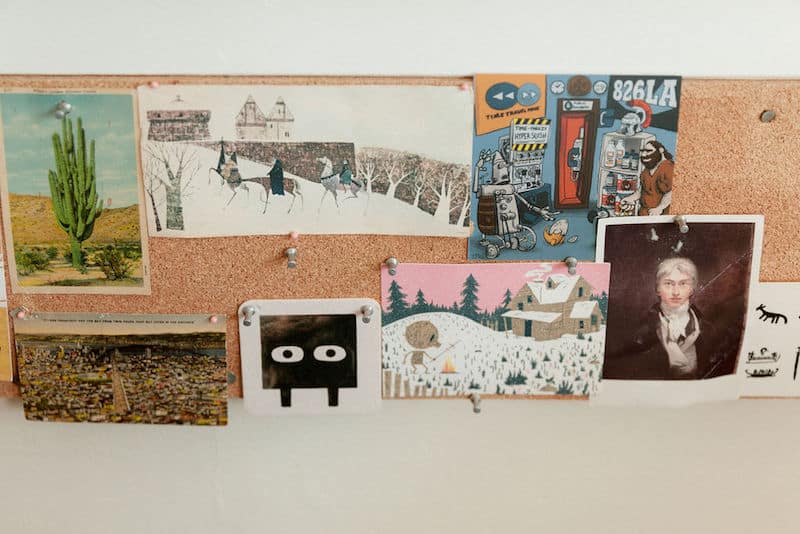
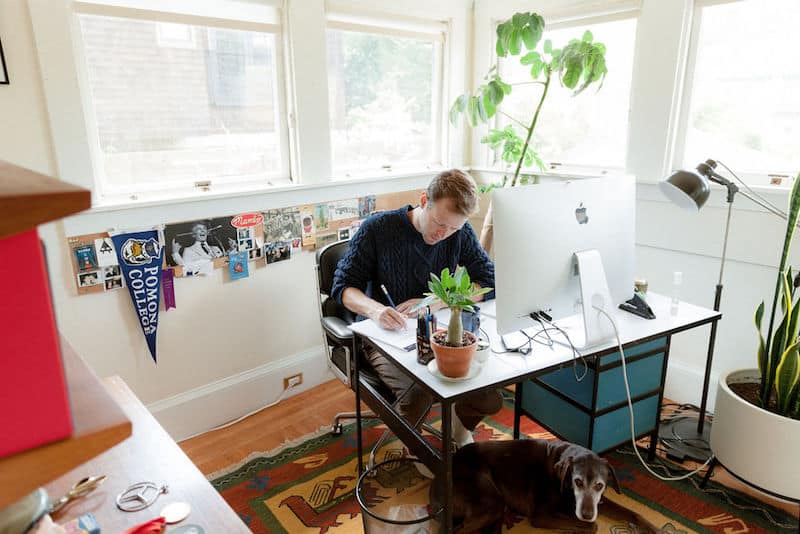
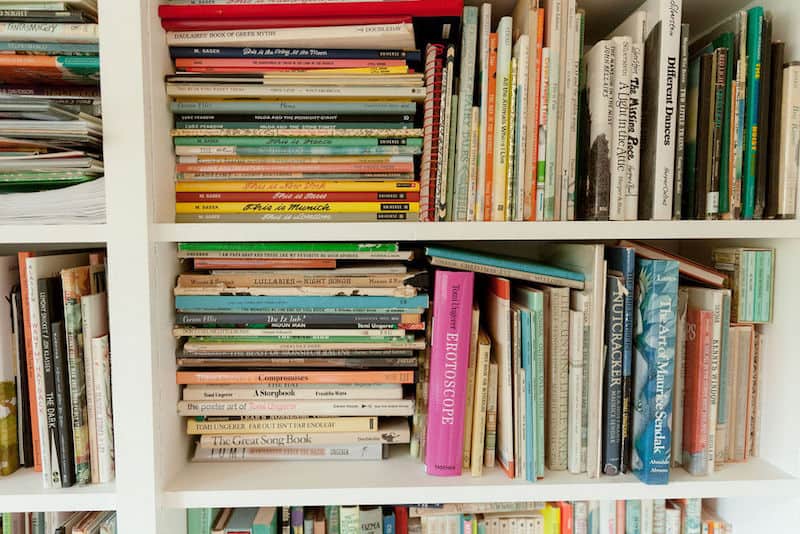
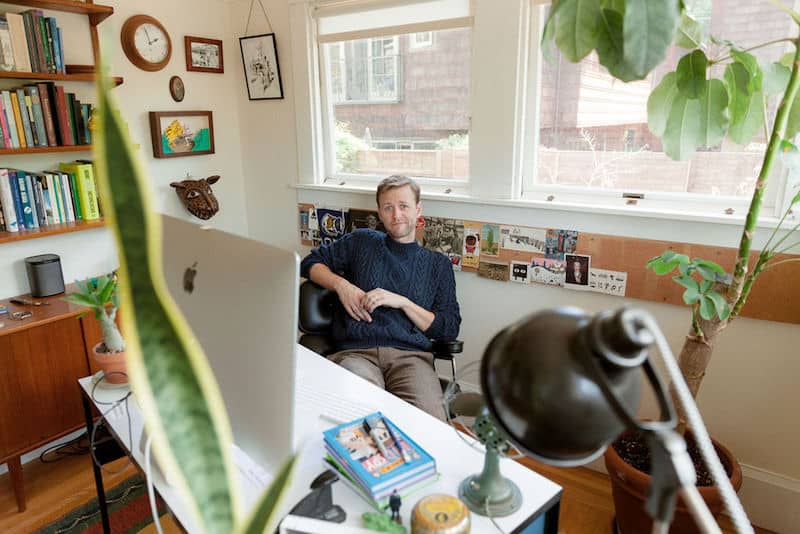
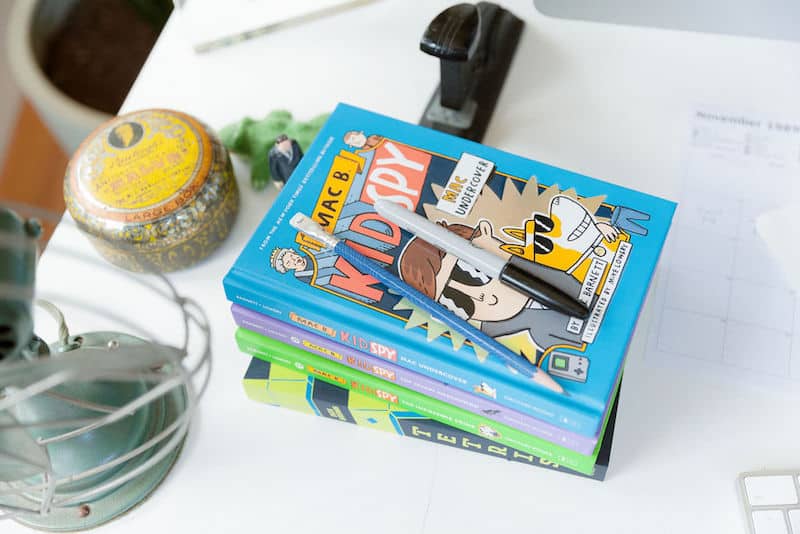
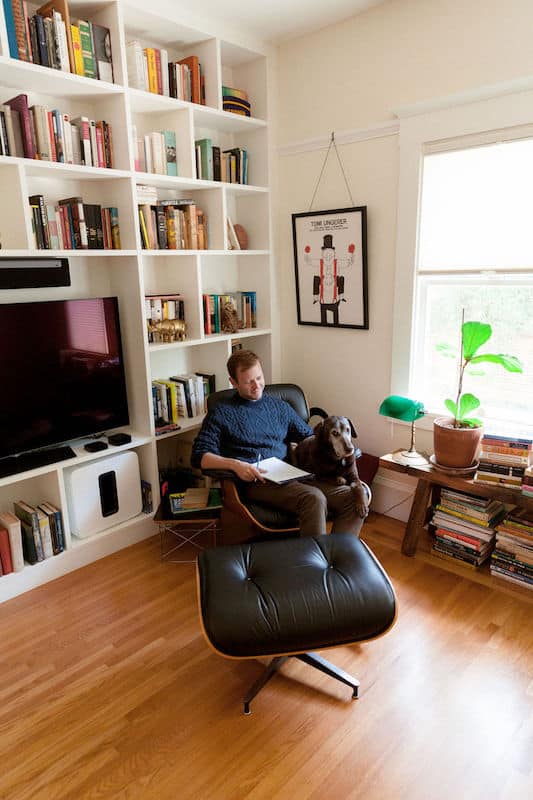



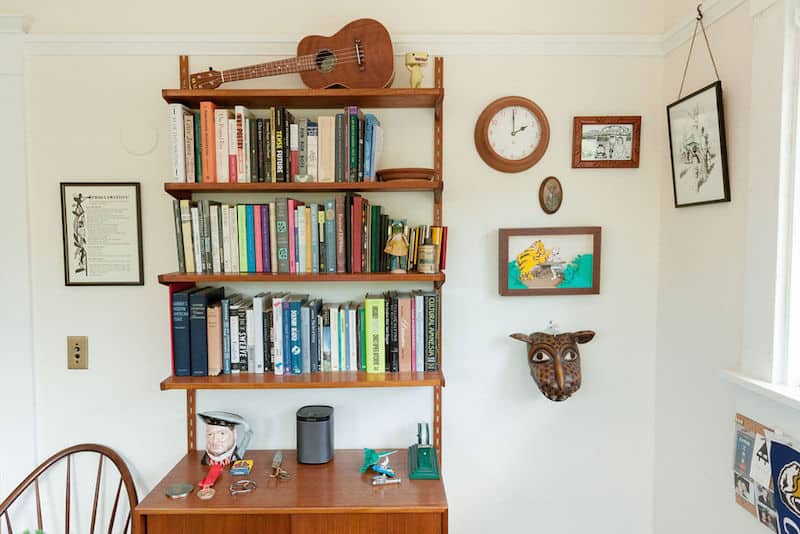
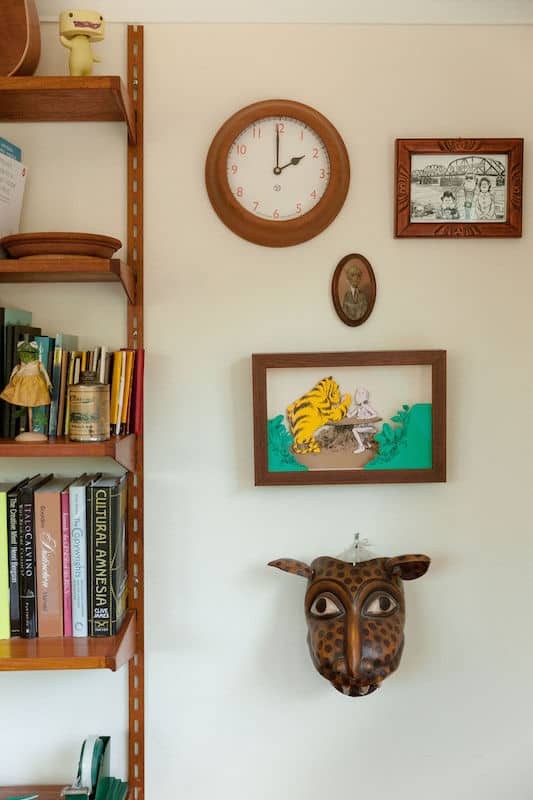
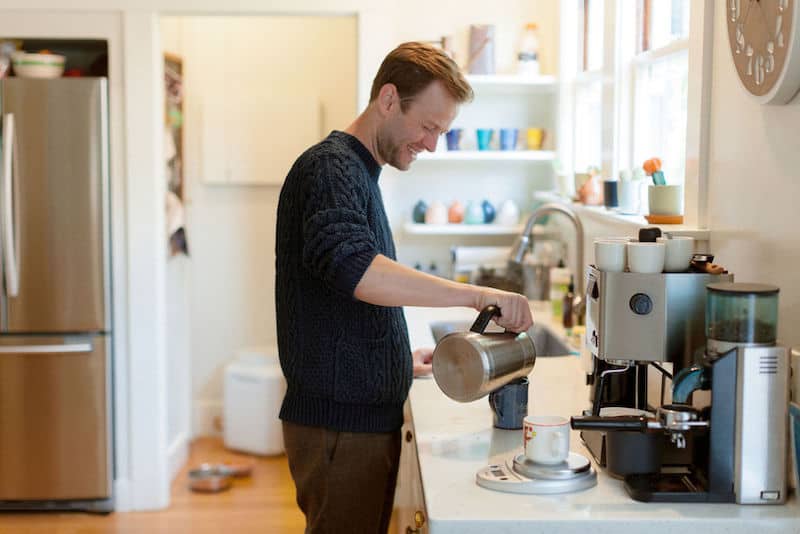

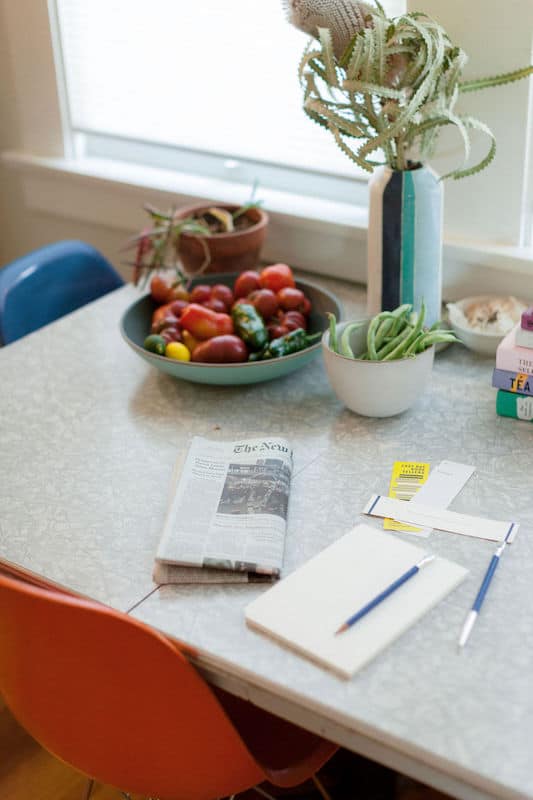
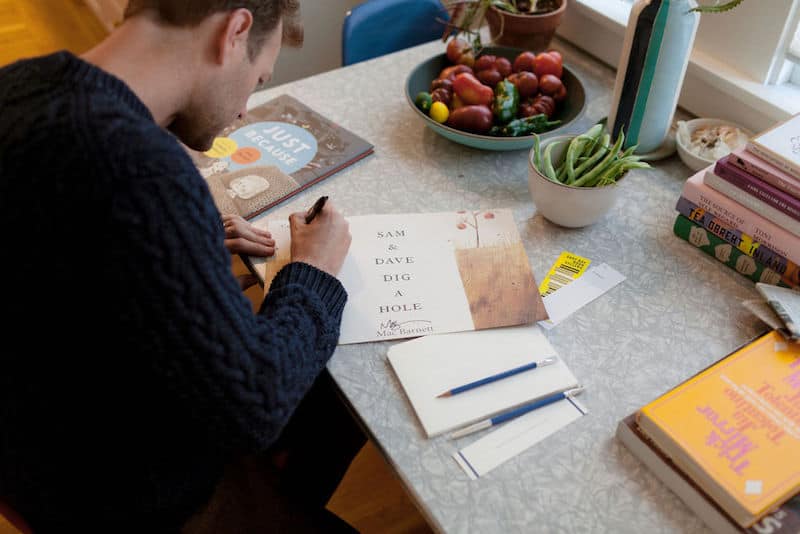

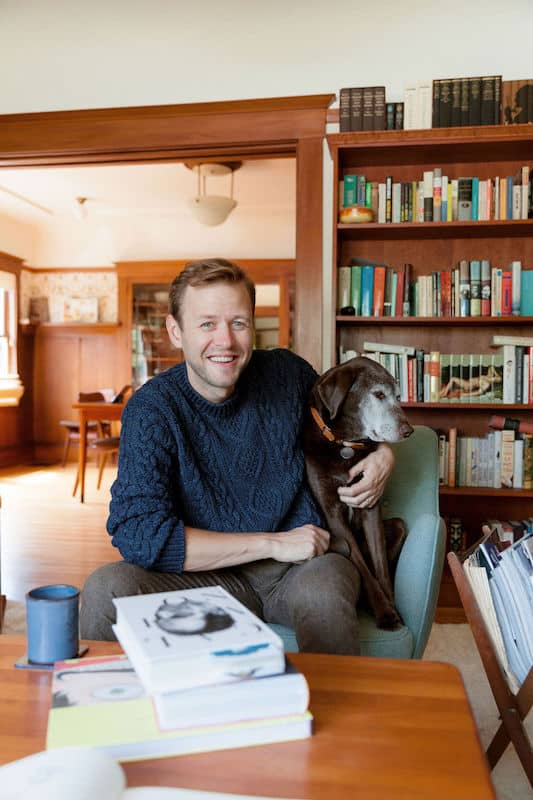
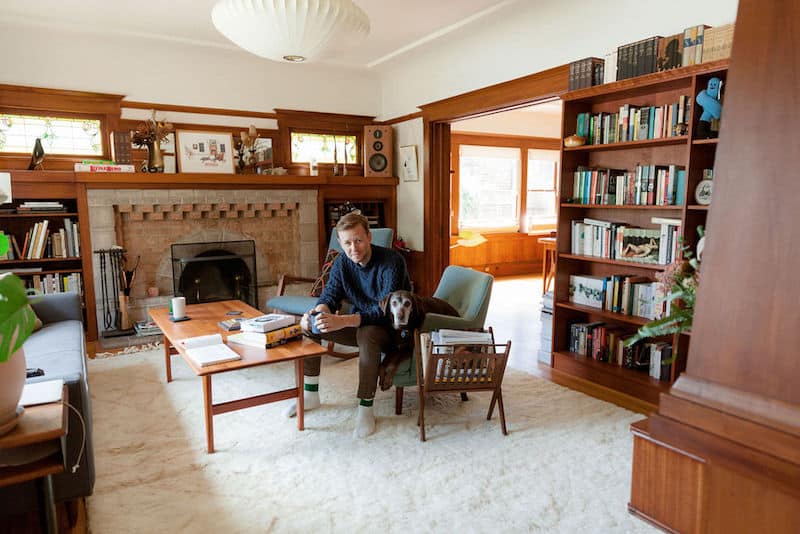
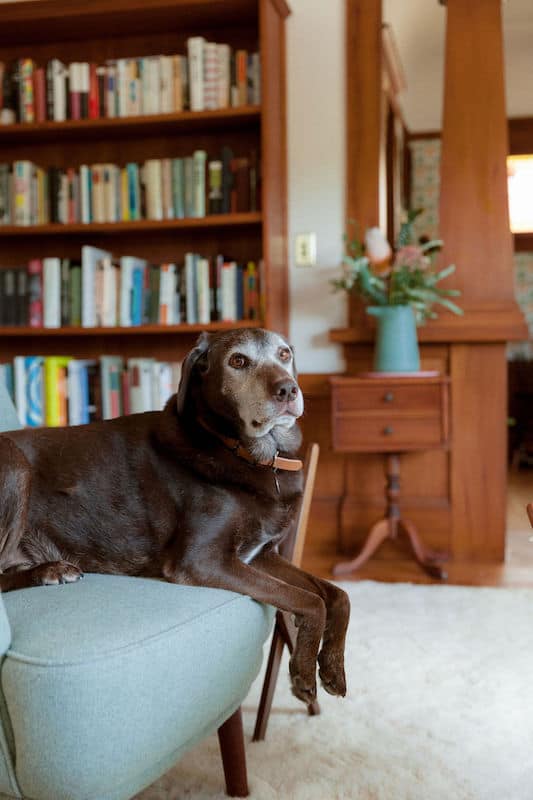

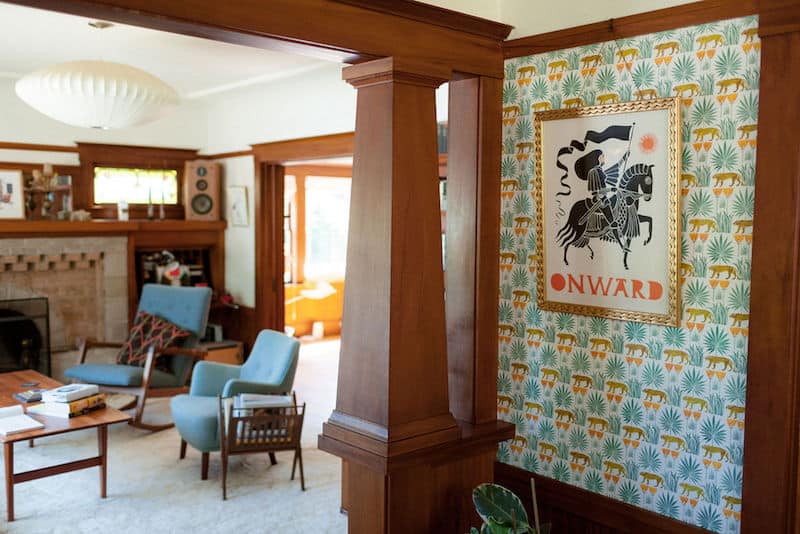
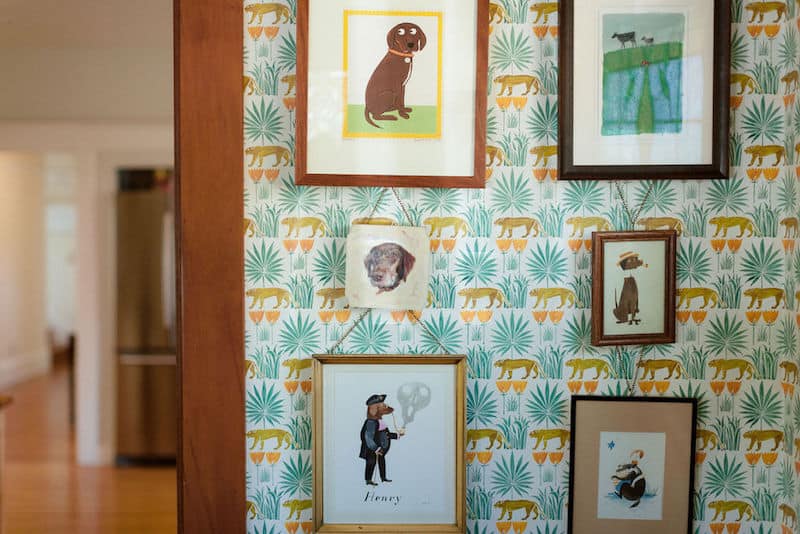
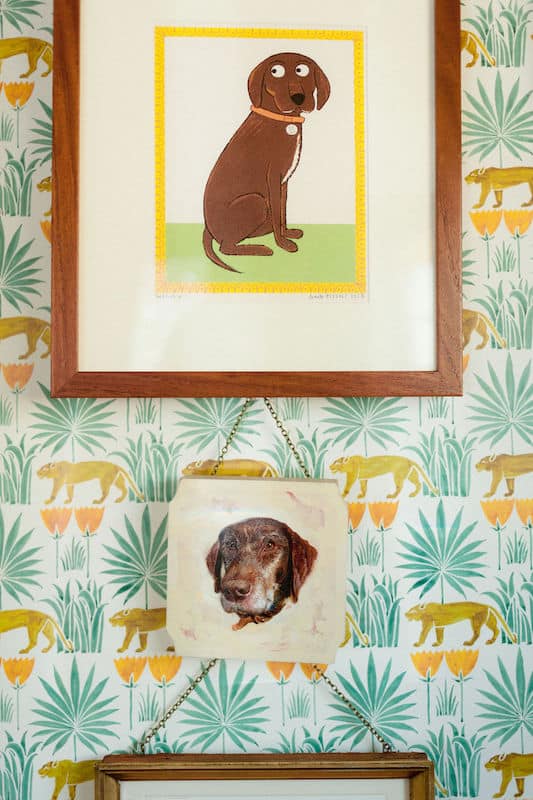


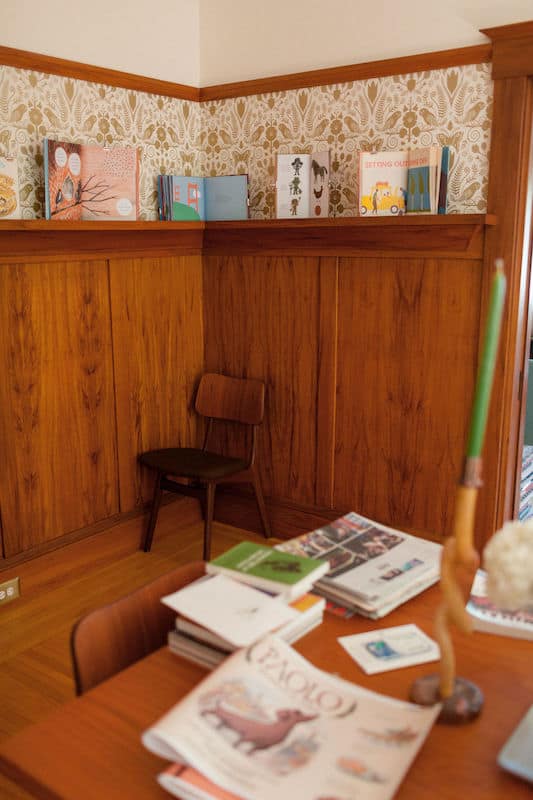
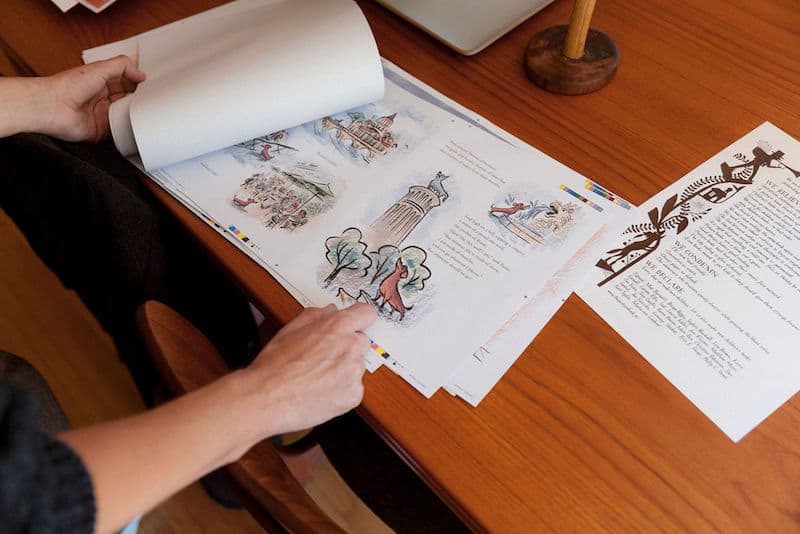
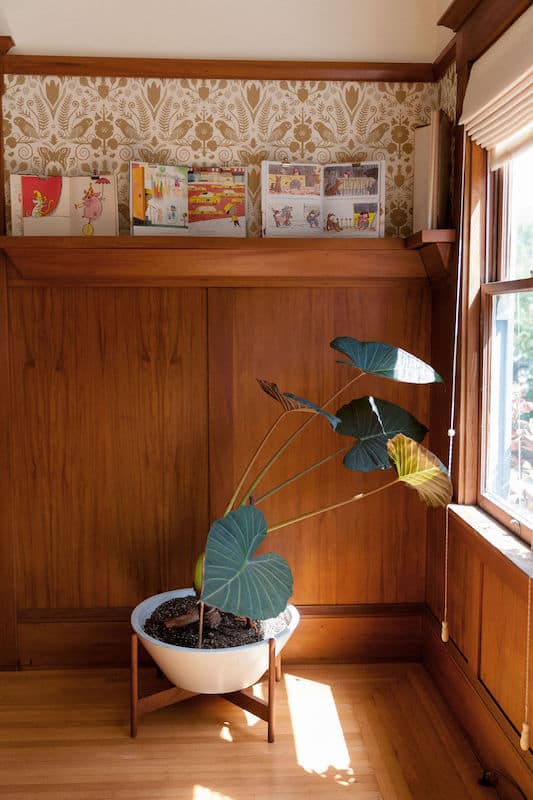
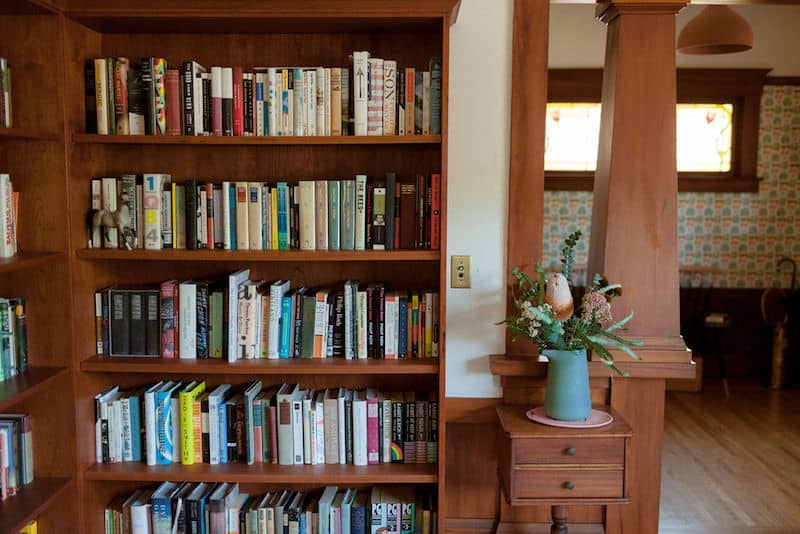
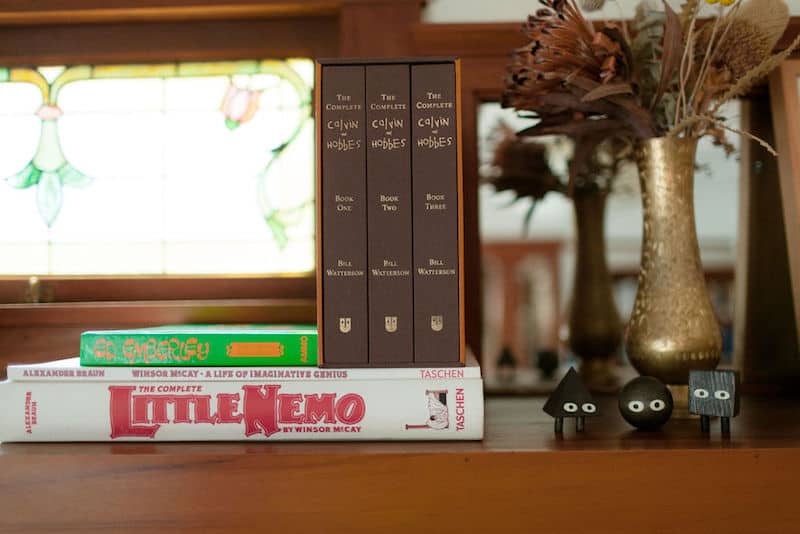
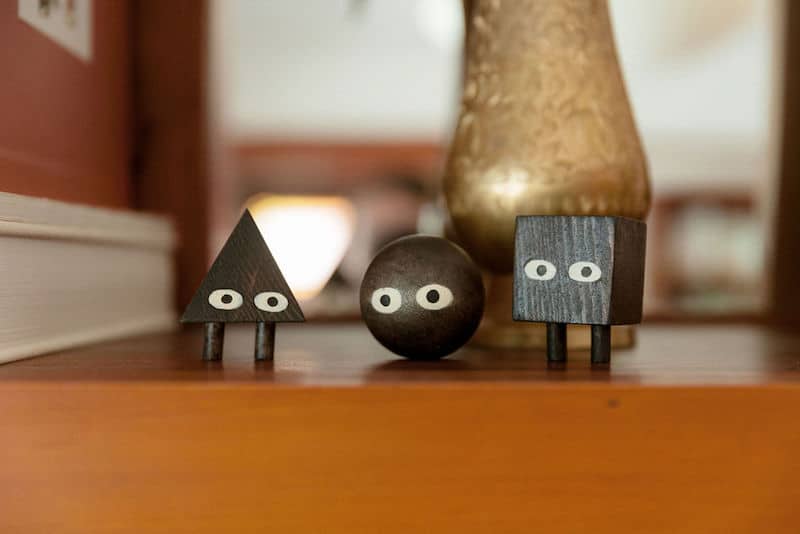

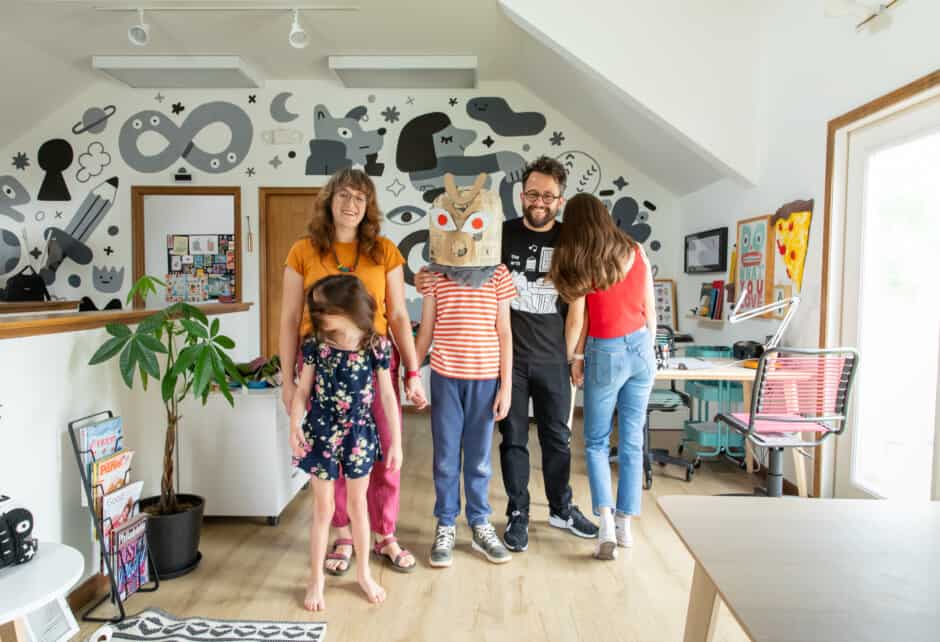
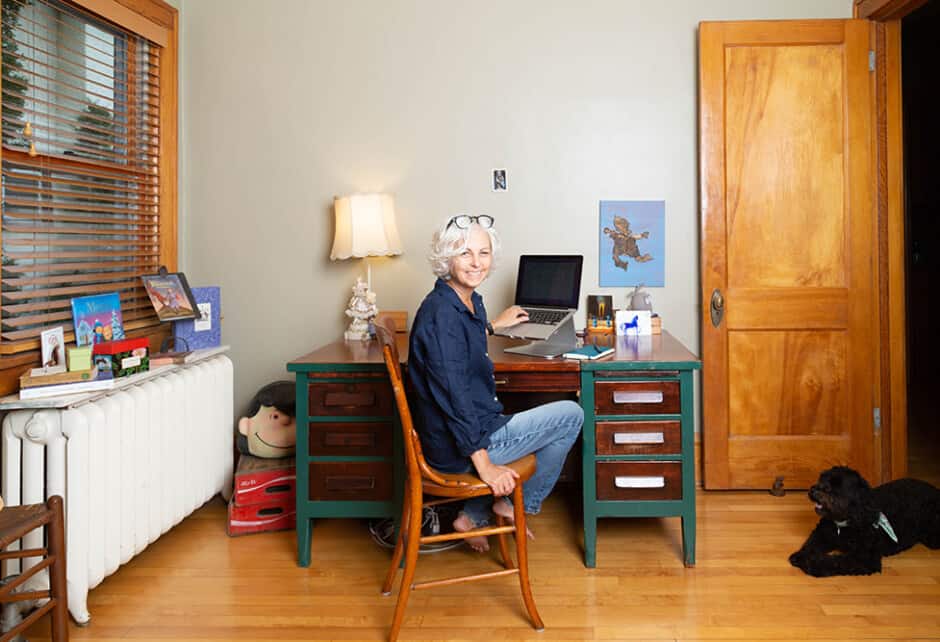

Those tiny triangle, circle & square figures are adorable. I love those books as much as my kids. We can’t wait to find out what shape was hiding behind the waterfall.